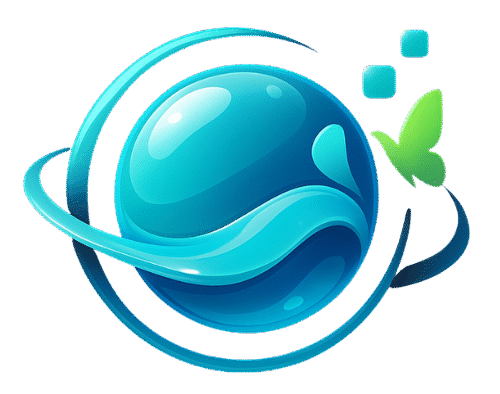The glossy, nature‑inspired look known as the Frutiger Aero aesthetic seems to be everywhere again. Scroll through TikTok and you’ll find slideshows of vivid skies, green fields and bubbles set to soothing music; browse Etsy and you’ll see posters and stickers evoking watery worlds and utopian cityscapes. This resurgence isn’t coincidental: it taps into a specific moment in design history. At the heart of it lies Windows Vista and its Windows Aero interface, a bold departure from earlier operating systems that blended high‑tech translucency with natural imagery.
A name born from Vista’s Aero
The term Frutiger Aero did not exist during the mid‑2000s; it was coined later by Sofi Lee of the Consumer Aesthetics Research Institute. She chose the name because it encapsulated two hallmarks of the look: the Frutiger typeface and Windows Aero, Microsoft’s design language for Vista. Lee explained that the aesthetic originated in the Windows Vista era – she was a teenager when Vista launched and remembers being captivated by its glossy, glowing interface. In essence, Frutiger Aero is a label retroactively applied to the corporate tech aesthetic that flourished roughly between 2004 and 2013.
What Windows Aero introduced
When Microsoft unveiled Windows Vista in 2006 it came with Windows Aero, a backronym for Authentic, Energetic, Reflective and Open. This design language revised the entire interface with an emphasis on animation, glass and translucency. New cursors and sounds were created to match the aesthetic, and users could customise the “glass” effects (adjusting transparency and tint) through the Control Panel.
The Start Menu and taskbar gained semi‑transparent, glossy surfaces with soft gradients, giving them a polished, futuristic look. Vista also introduced the Windows Sidebar, a panel hosting gadgets with three‑dimensional icons and reflective effects. Other features like Flip 3D and live taskbar thumbnails used hardware‑accelerated transparency to present open windows as cascading cards. These visual flourishes were striking at the time and signalled a move toward interfaces that felt more like objects in space rather than flat panels on a screen.
How Vista shaped the Frutiger Aero aesthetic
Frutiger Aero goes beyond UI design, but Windows Vista’s Aero interface embodied many of its key motifs. Vista’s promotional materials and default wallpapers often featured electric‑green grass and impossibly blue skies, mirroring the trend’s focus on lush landscapes and saturated colours. The Aero glass effect echoed the aesthetic’s fascination with translucent materials; the glowing icons and 3D gadgets reflected its love of skeuomorphism and object‑like interfaces.
Design observers note that Vista’s Start Menu and taskbar used glossy, transparent elements to create a polished feel, and the Sidebar gadgets had reflections and shadows that contributed to the sleek design. These features cemented Vista as one of the earliest mature examples of Frutiger Aero. The operating system’s look influenced a host of other products at the time (from early iPhone interfaces and Xbox 360 dashboards to advertising and packaging) and set expectations for what “futuristic” computing could look like.
The aesthetic’s broader themes
While Vista provided the template, the Frutiger Aero aesthetic grew into a larger design movement. It is characterised by bright, natural imagery (tropical fish, grasslands, oceans), glossy glass effects, 3D spheres and orbs, auroras, and bokeh photography. It often pairs these visuals with the highly legible Frutiger fonts.
Designers and marketers adopted this style to make technology feel friendly and approachable at a time when digital devices were becoming ubiquitous. Companies wanted interfaces that mimicked real‑life objects to help people unfamiliar with touchscreens and smartphones feel comfortable. The naturalistic elements also conveyed a sense of harmony between humans and technology : a utopian vision that resonated during a period of rapid technological change.
Nostalgia and revival
The current interest in Frutiger Aero is partly driven by nostalgia. Commentators have noted that the aesthetic harks back to a moment when technology felt optimistic. It offers an escape from the minimalist, flat designs that have dominated interfaces since the late 2010s; its lush imagery and glassy textures evoke a “future we were promised and never delivered.” On platforms like TikTok and YouTube, slideshows of mid‑2000s icons, gadgets and wallpapers attract millions of views.
Researchers also suggest that nostalgia itself is a social emotion: recalling early digital experiences can foster a sense of connection and comfort. This explains why younger audiences, who may not have used Vista, still feel drawn to its look: nostalgia can be transferred through stories and imagery. In recent years the hashtag #frutigeraero has attracted hundreds of millions of views and brands are tapping into the trend for its cross‑generational appeal.
Lasting impact
Windows Vista was often criticised for its performance issues, but its aesthetic innovations have endured. By merging glassy, animated interfaces with natural landscapes and bright colours, Vista’s Aero set the template for a design style that continues to evoke optimism and wonder. Frutiger Aero, as it came to be called, is more than a nostalgic fad; it is a reminder of a moment when our digital future felt open, friendly and beautiful. As designers revisit this look today, they are not just reviving a trend – they are reimagining a vision of technology in harmony with nature.



